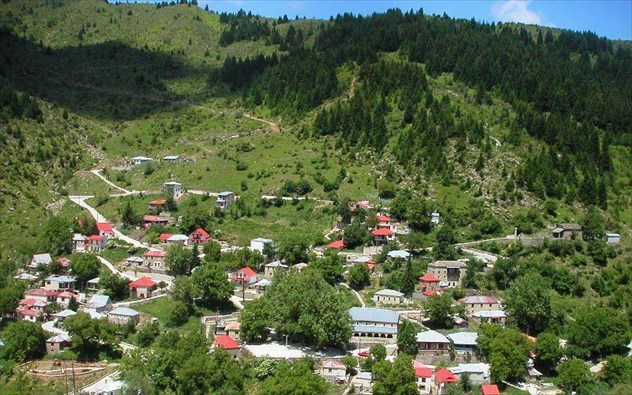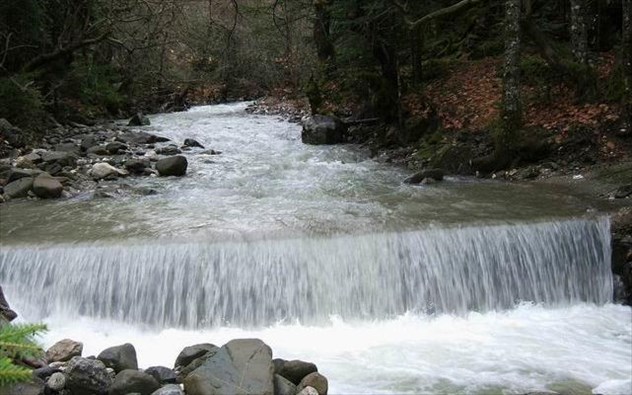Pictures www.clickatlife.gr
The villages of Aspropotamos (Aheloos) are located between Tzoumerka, Metsovo and Petouli in the western part of the Trikala region in southern Pindus. Surrounded by mountains with fir trees and many small rivers forming the Aheloos River, the villages have few permanent residents, but are very beautiful.
The expanded municipality of Aspropotamos consists of 8 old municipalities (Chalkios, Anthoussa, Katafito, Stefani, Krania, Kalliroi, Politeia and Agia Paraskevi). The majority of villages are Wallachian, and the entire area is included in the European Natura 2000 network. Unfortunately, many old buildings have been destroyed.
The community today

All the villages here are beautiful and built at idyllic places at an altitude between 950 metres and 1,480 metres, among fir trees and rivers. Every village has a central square with a sycamore tree, a traditional fountain and a stone church. Picturesque cobblestones will take you out of the village, so that you could enjoy the beautiful view. There are also many springs and chapels. Local builders built the old houses in the early 20th century with stones from the surrounding area. These are two-storeyed buildings with small windows and a tiny balcony, decorated with basil and marigold.
Krania is the largest of the villages and located at an altitude of 1,150 metres, 72 km from Trikala. During the summer, its residents are more than 3,000, but in fact the actual population is 363 people (according to the 2001 census). In the past, it was an important centre for production and trade of woollens. Kraniotikos, a tributary of the Aspropotamos River, divides the village in two parts and is full of trout. The ethnographic museum was opened in 2001with many exhibits of traditional fabrics, a bridal bed and a large photo archive.

Agia Paraskevi is the second largest village located at an altitude of 950 m, south of Metsovo. It had 296 residents in 2001. You will see the church of St. George here, which is more than 200 years old.
You can stay in Kalliroi and in guest houses in Krania, Politeia and Gardiki. Breakfast, appetizers for the local brandy “tsipouro”, as well as roasted dishes are offered in the evening in all cafes on the central squares of the villages. Be sure to try kebab, cheese-pie and roast lamb, or buy cheese and honey from local producers.
Activities and interesting places

Near Chaliki, the northernmost village in the region, you will find Verlinga Lake which has water only in the winter. Along the road from Chaliki to Rona and Vourtopa (towards Metsovo) you will see the springs of the river, creating breath-taking waterfalls. Some of them exceed 5 metres in height, and access to some is difficult.
In the spring and the summer you can enjoy various activities, such as hiking, biking, horseback riding, rafting, and mountaineering.
Aheloos is the second longest river in Greece and springs from Pindus, southwest of Metsovo. After 220 km, it flows into the Ionian Sea.
How to get there:
Access is easy from Trikala through Kalambaka. Along the Trikala-Ioannina highway, turn at the Mourgani intersection and continue towards Kastania and the other villages. The villages are connected with Metsovo to the north as well.
Where to stay:
You can stay in Manakos Hotel in Kastania, in Pyrgos Mandania or Acheloides in Kalliroi.